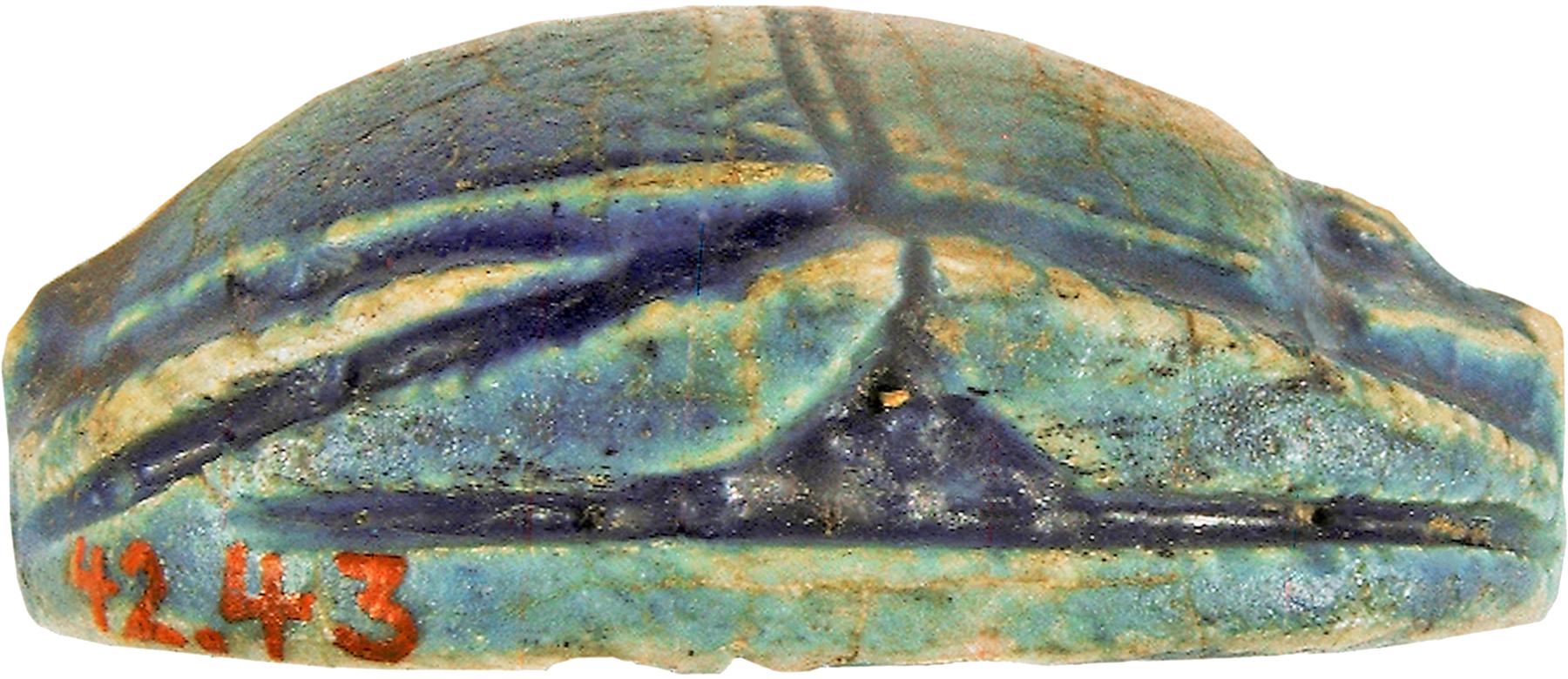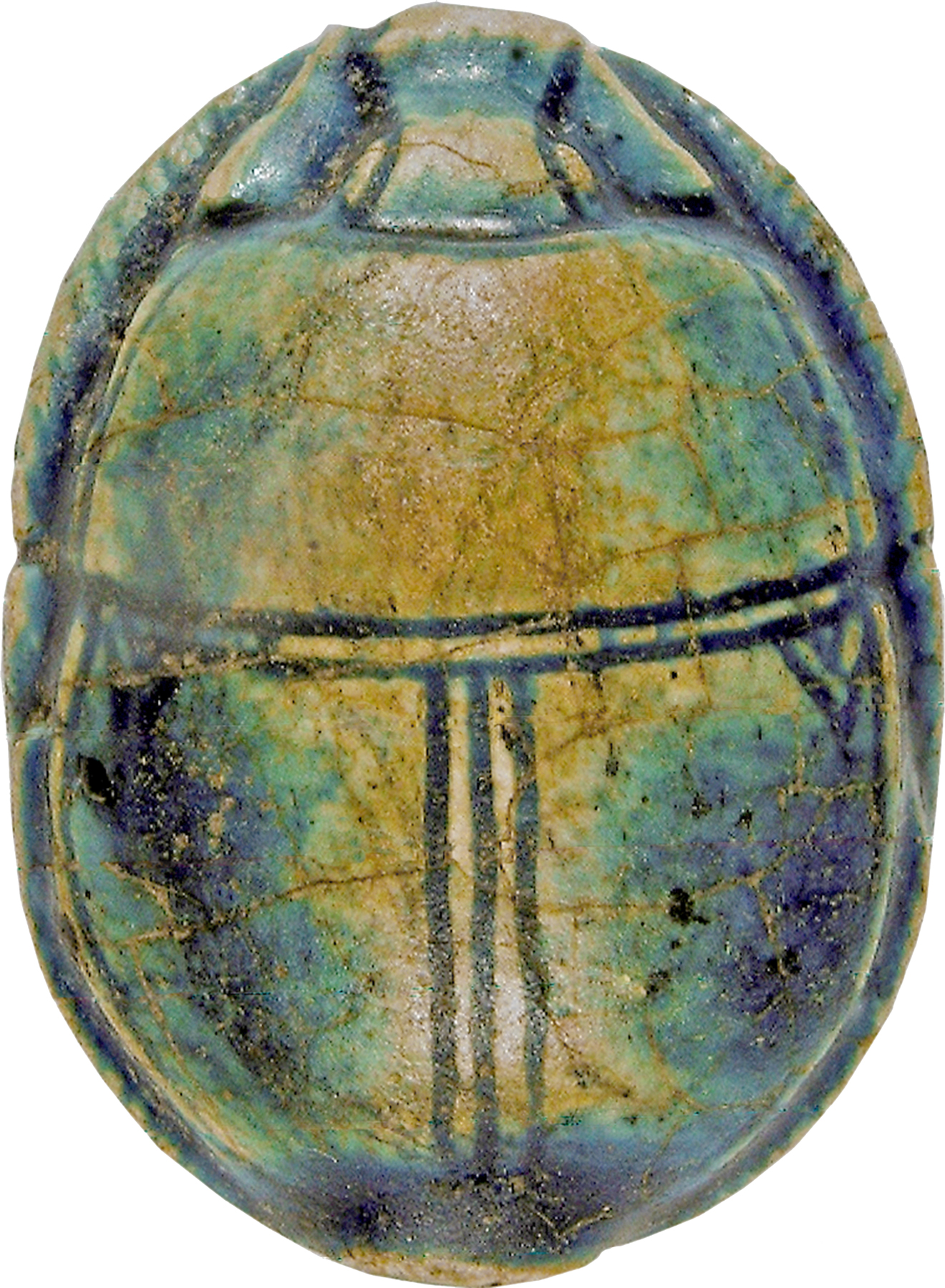Scarab with Bes and Geese
(Ancient Egypt and Nubia )
This dwarf-like, protective deity was very popular in ancient Egypt. Bes is represented with a nude body and grotesque facial features, a protruding tongue, and the ears and mane of a lion. He wears a tall feather-crown and usually rests his hands on his hips. Known from as early as the Middle Kingdom (ca. 2000 BCE), Bes was venerated as a protector of the home, family, and childbirth, and for that reason figures prominently in domestic magic and amulets. His close connection to all aspects of fertility and sexuality is demonstrated by the presence of his image in the "Birth-houses"-shrines associated with temples of the Late Period and the Greco-Roman era. He also had a special relation to the goddess Hathor and performed in her retinue as a musician and dancer.
On the bottom, this scarab displays the Bes-figures in frontal view and two geese in side view. The geese may represent the god Amun, and therefore the meaning of this motif may be related to magical aspects of Amun.
Provenance
Provenance (from the French provenir, 'to come from/forth') is the chronology of the ownership, custody, or location of a historical object. Learn more about provenance at the Walters.
Henry Walters, Baltimore [date and mode of acquisition unknown]; Walters Art Museum, 1931, by bequest.
Exhibitions
| 2006-2007 | Daily Magic in Ancient Egypt. The Walters Art Museum, Baltimore. |
Geographies
Egypt (Place of Origin)
Measurements
H: 1/2 x W: 7/8 x L:1 3/16 in. (1.3 x 2.2 x 3 cm)
Credit Line
Acquired by Henry Walters
Location in Museum
Not on view
Accession Number
In libraries, galleries, museums, and archives, an accession number is a unique identifier assigned to each object in the collection.
In libraries, galleries, museums, and archives, an accession number is a unique identifier assigned to each object in the collection.
42.43






